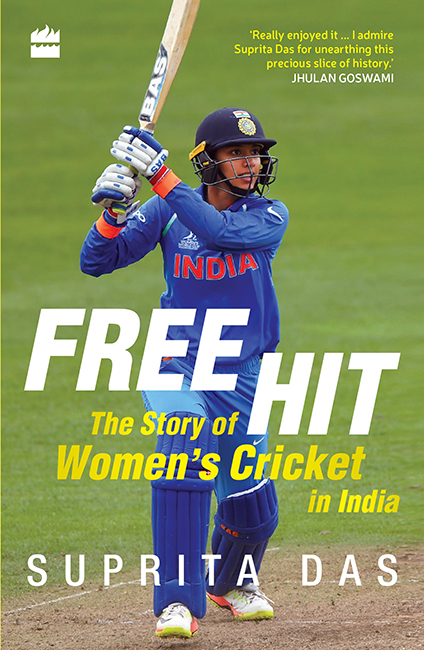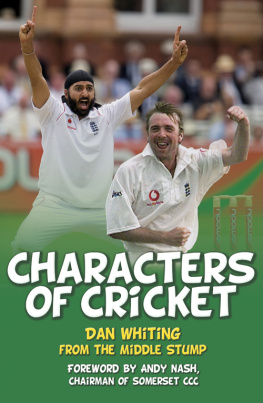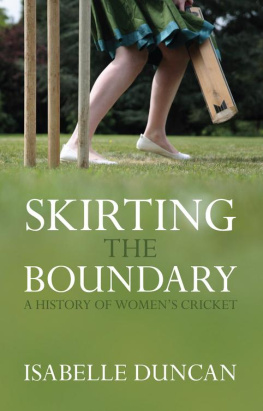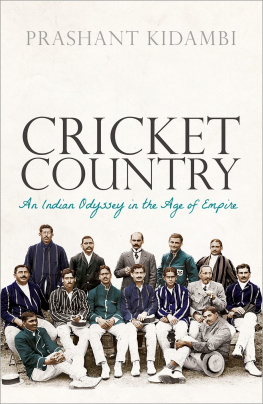Table of Contents


For Baba
Contents
I f someone were to ask me that in all my years of reporting and writing on sport, which was the weirdest interview that Id done, Id tell them about the one that never happened.
Forty-five minutes after waiting for Sreerupa Bose, the former India womens cricket captain and coach, at her Kolkata residence on a December morning, when I found her dead body on her bathroom floor she had suffered a massive cardiac arrest I was in shock. Plenty of sleepless nights followed. Her warm voice over the telephone, telling me, There are so many womens cricket stories, where do I even begin? Why dont you come over? would almost suddenly break into distorted colour bars with static sound in the background, the kind you get when your TV stops working. The image of her lying in a pool of blood would flash in front of my eyes, refusing to leave.
My Free Hit journey was thus hit by a roadblock even before it could begin. Ominous signs, I thought. But there was a story waiting to be told. Even though I didnt get to hear Boses story in her own words, a voice within told me that she would want her story, and that of many others, to be narrated for future generations.
This book is a tribute to her, and all the other women and men who have, in their own ways, been a part of the story of womens cricket in India. A story that has threatened to fade away several times, even be forgotten.
Not any more. Just like a batsman who can hit freely and fearlessly, without any worry of being dismissed after an umpire signals a free hit, womens cricket in India cannot be dismissed any longer as a sideshow.
The women are here to stay; you cant strike them off.
20 July 2017
Derby, England
O n the day India was to take on Australia in the semi-final of the ICC Womens World Cup, the conditions were overcast. A sense of deja vu filled Jhulan Goswami. Twelve years earlier, bad weather had come in the way of an IndiaAustralia World Cup match in South Africa. Except, it had been a league-stage game and the Indian team had probably prayed for a washout. Besides, that was Jhulans first World Cup and it hadnt mattered much even if she bowled badly; the experienced Neetu David would have rustled up some magic and Jhulan could have enjoyed being at crickets showpiece event to the fullest.
As the players watched from their dormitory windows the massive downpour that morning, for which there had been no forecast at all, there was a sense of excitement they tried to suppress. If the downpour continued and the game got called off, India would be able to avoid Australia in the semi-final and instead face New Zealand, a team they were more confident of defeating. Multiple spells of rain and several ground inspections later, the game was indeed cancelled, much to Indias delight. But just thirty minutes after an announcement to such effect, the clouds had parted and there was bright sunshine.
This was different, though. Jhulan was now the worlds leading wicket-taker among women in one-day internationals (ODIs) and the only playing member from the 2005 team that had made it to the final, apart from Mithali Raj, Indias captain on both occasions. It was the morning of the semi-final and history beckoned India after what seemed like light years. Australia was as unbeatable and tenacious as they were in 2005. The five-time world champions were on top of their game; they made every opposition look like an underdog. They were the defending champions and had won all their games of the tournament, barring the one against hosts England which was a close encounter, a last-ball finish.
The Aussies had won a league game against India by a more-than-convincing 8-wicket margin. It didnt matter that Punam Raut scored a century in that match. Mithali Raj achieved a milestone too she became the worlds highest run-scorer in ODIs, crossing Englands Charlotte Edwards but that wasnt cause for celebration either. It didnt matter that India were playing in Derby, a venue where theyd been unbeaten so far. After all, India lost the game. To win, everybody needed to contribute. And to win against Australia, theyd all have to come up with something extraordinary.
It was frustrating to watch the covers being pulled in, and then taken off every fifteen minutes. It was a bit like 2005, but there was something different this time: the pressure of being watched by so many people for the first time. After the win against England, more people had started following Indian womens cricket. What added to the pressure, perhaps, was news that the tickets for the final at Lords were sold out already.
Once the rain stopped completely and a final inspection was done, the game was ready to be played but as a 42-overs-a-side contest where India won the toss and chose to bat first. Out came Indias leftright opening combination of Smriti Mandhana and Punam Raut to bat in front of the sparse crowds at the County Ground in Derbyshire. A classic cover drive and six balls into the innings, Smriti played a half-hearted pull shot off Megan Schutt. It was as mistimed as was possible for an out-of-form batsman. Smriti added a 6 to her previous scores of 2, 8, 4, 3 and 13 before walking back to the pavilion. The knocks of 90 and 106 at the start of the tournament seemed like a thing of the past and, once again, Mithali Raj came out to bat earlier than she wouldve liked.
In the last few games, there had been no time for Mithali to catch up on even a paragraph of The Essential Rumi, forget a few pages, before coming out to bat. In the league game against the Aussies, Mithali and Raut had shared a 175-run stand, but had taken 250 balls for it. In this rain-curtailed affair, acclimatization was not an option. Schutt and Ellyse Perry hardly allowed them to break free. The result: Raut tried desperately to break the shackles and a straight hit to deep midwicket in the tenth over saw her dismissed for a 26-ball 14.
Harmanpreet Kaur had been playing with a finger injury for the last five games. The Indian vice-captain had dislocated a joint in her left ring finger while fielding in the game against West Indies. Diana Edulji, the former India womens captain, had been in touch with Kaur via WhatsApp through the World Cup. Till her knock of 60 against New Zealand in the previous game, Kaurs batting left much to be desired. Disappointed, Edulji sent Harman a stinker after the first few games.
Have you gone to England to play the stupid cricket that youre playing?
Maam, I will try my best.
After the 60 against the Kiwis, Harman texted Edulji, Is it okay now? Did I play better?
I am still not happy with you was the curt reply.
The captainvice-captain partnership was going to be crucial if India were to put up a competitive total, and running between the wickets was key. But Mithali Raj was the more hesitant of the two. Kaur played a cover drive or two to loosen up, but, overall, the bowlers had managed to keep the Indian batsmen quiet. Halfway through the innings, with India barely managing four runs an over, they lost Mithali, who enroute her 61-ball 36 had become the tournaments highest run-getter.
Meanwhile, a six and a four took Kaur to her fifty. It had come off 64 balls, but the last 32 runs were off 25 deliveries, indicating that she had well and truly warmed up. At the other end was eighteen-year-old Deepti Sharma, who had batted from one-down to No. 9 at different stages of the tournament. But all that didnt matter to Kaur.












